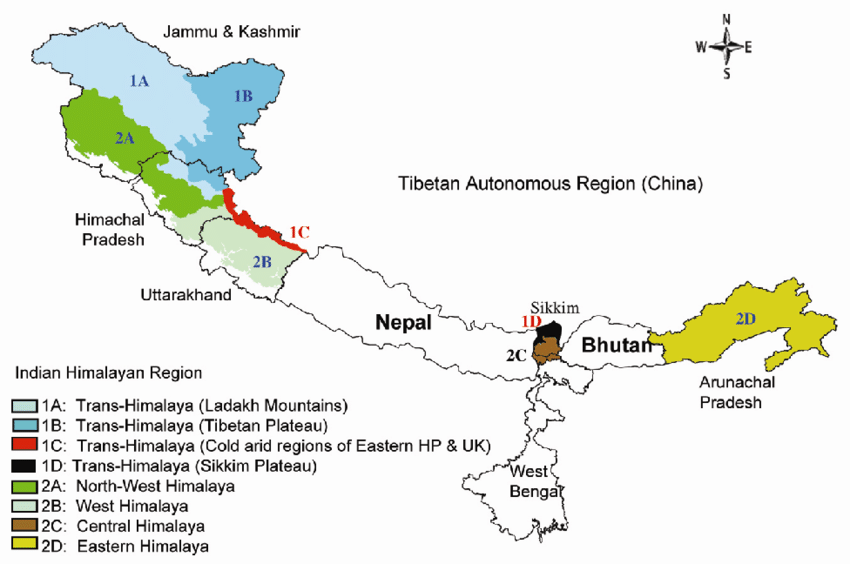Important Facts For Prelims
Most Promising Astronomical Site: Hanle
- 04 Oct 2021
- 2 min read
Why in News
According to a recent study, the Indian Astronomical Observatory (IAO) located at Hanle near Leh in Ladakh is becoming one of the promising observatory sites globally.
- The Indian Astronomical Observatory has one of the world's highest sites for optical, infrared and gamma-ray telescopes.
Key Points
- About:
- Hanle site is as dry as the Atacama Desert in Chile and much drier than Devasthal (Uttarakhand) and has around 270 clear nights in a year and is also one of the emerging sites for infrared and sub-mm optical astronomy.
- This is because water vapour absorbs electromagnetic signals and reduces their strength.
- It has advantages of more clear nights, minimal light pollution, background aerosol concentration, extremely dry atmospheric conditions, and uninterrupted monsoon.
- Such conditions are considered crucial for astronomers to build huge telescopes and plan for future observatories and predict how they will vary with time.
- Hanle site is as dry as the Atacama Desert in Chile and much drier than Devasthal (Uttarakhand) and has around 270 clear nights in a year and is also one of the emerging sites for infrared and sub-mm optical astronomy.
- Other Promising Sites:
- Merak observatories in Ladakh.
- Devasthal in Nainital, Ali Observatory in the Tibet Autonomous Region in China.
- South African Large Telescope in South Africa.
- University of Tokyo Atacama Observatory and Paranal in Chile.
- Mexico’s National Astronomical Observatory.
- Trans- Himalayan Region:
- The Trans-Himalayas Mountain Region or Tibet Himalayan Region is located to the north of the Great Himalayas which consists of Karakoram, Ladakh, Zaskar and Kailash mountain ranges.
- It is also called the Tibet Himalayan Region because most of the part of these ranges lies in Tibet.
- They are the eastward continuation of the most northerly ranges of the Himalayas.
- It consists of an ill-defined mountain area about 600 miles long and 140 miles wide in the centre, narrowing to a 20-mile width at the eastern and western ends.
- It is mainly composed of granites and volcanic rocks of the Neogene and Paleogene age.
- The Trans-Himalayas Mountain Region or Tibet Himalayan Region is located to the north of the Great Himalayas which consists of Karakoram, Ladakh, Zaskar and Kailash mountain ranges.





